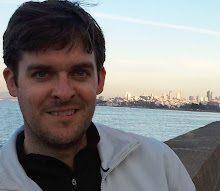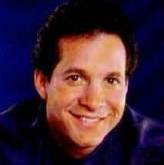"Making a movie is casting a spell."
Kenneth Anger
Director Nicolas Winding Refn’s neo-noir/road movie hybrid, DRIVE, stunningly captures an enchanted ‘80’s cosmos amidst a decaying asphalt desert of Los Angeles by displaying his cunning abilities as a maestro - - or magician- - capable of harnessing music, visuals, symbols, sounds and employing essential film references and genre devices to be used at his command. As the film opens from darkness, a directive is being uttered by Driver (Ryan Gosling) in the form of an incantation after a revving engine is heard in the distance through an atmospheric night time ambience while burbling notes arise from the soundtrack which summon images of a sorcerer’s cauldron filled with a bubbling brew.
There's a hundred thousand streets in this city. If I drive for you, you give me a time and a place, I give you a five-minute window. Anything happens in that five minutes, then I'm yours, no matter what. Anything happens a minute either side of that, and you're on your own. Do you understand? Good. And you won’t be able to reach me on this phone again.
As the sequence unwinds, the camera slowly sweeps through Driver’s domicile, at first, focusing on a marked-up map of Downtown Los Angeles followed by Driver surveying the L.A. cityscape out of an apartment window. Emblazoned on the back of his jacket is a golden scorpion which seems to take on the significance of a supernatural totem. As he speaks to his client over the telephone, an intermittent burst of neon glows under his white jacket as if he were standing over a fire-burning kettle simmering a glowing, pink potion.
Driver (Ryan Gosling) begins to stir the pot … and cast his spell over the City of Angels.
When coupled with the schematic diagram of the city streets, it appears as if he is performing a cinematic incantation over the city and fashioning its landscape to his wishes or, at least, projecting onto the city a series of specialized escape routes he is about to maneuver in his trusty, steel steed. Either way, some kind of sorcery is indeed stirring.
Navigating through the city’s gritty arteries, penetrated by glittering neon and sparkling traffic lights, takes on a spectral, otherworldly quality. As Driver takes refuge in the mobile, womb-like sanctuary of his automobile, while being bathed by green, red and sepia-colored light, other cars and street lamps pass by him like fleeing phantoms and surges of electricity in a modern, yet, retro-noir terrain.
Upon arriving at a pre-determined rendezvous point, he meets a pair of crooks cloaked in dark clothing who are about to perform a heist and it is revealed that Driver is their hired wheelman responsible for their getaway. The five-minute countdown begins and Driver initiates the stopwatch feature on his wristwatch while donning a pair of Gaspar 2204 driving gloves echoing the predominate use of gloves of this type in the decade of the eighties. No modern conveniences like digital timepieces or cellular devices are employed. Driver triggers a walkie-talkie connected to a police band and along with him, we wait, in anxious anticipation. He also flips on the car radio just in time to catch the remaining fifteen minutes of a professional basketball game in the nearby Staples Center which will parallel the suspenseful intensity of Driver eluding the authorities (by land and air) in a cat-and-mouse chase traversing the highways and byways of the City of Angels. Pulling into the Staples Center’s parking structure moments after the local Los Angeles team proves victorious, Driver successfully ditches the car and walks out of the structure unscathed as scores of fans seemingly cheer along with him at his momentous escape from justice.
What we come to know about Driver is the following: above all else, he drives, but beneath his restrained exterior, he’s a man of few words who speaks softly and carries a big stick; he spends his days performing stunt work for the Hollywood film community, but mostly works in a garage; he moonlights as an anonymous wheelman on heists and never works with the same client twice; he has no name to speak of; he doesn’t smoke, but has a fondness for bracing toothpicks between his lips; he’s focused, skilled with his hands and a man of his word; Driver is at his most optimum strength when he is behind the wheel ofan automobile - - it seems to magically recharge his lifeblood; he switches cars as quickly as he does his outfits/identities (mechanic, stunt man, cop, cold-blooded killer, guardian angel) and he doesn’t have any partners. However, his credo against forming partnerships changes when he enters into a relationship with a neighbor in his apartment complex with whom he becomes smitten, Irene (Carey Mulligan), who has a young son, Benicio (Kaden Leos), to whom he offers a token of goodwill, a toothpick.
Extra-diegetic music enters this stage of the soundtrack that not only punctuates Driver’s connection with Irene, but underscores what they might be feeling for one another, complemented by energetic, synth-pop notes reminiscent of the ‘80’s; songs like “A Real Hero” by College featuring Electric Youth
And you have proved to be a real human being and a real hero; A planet on a cold, cold morn’; 155 people or more; All safe and all rescued …
and “Under Your Spell” by Desire,
I don’t eat. I don’t sleep. I do nothing but think of you. You keep me under your spell…
the latter of which expands on the film’s affinity for spell casting.
The film posters for DRIVE and RISKY BUSINESS exhibit a stylishly ‘80’s font with a penchant for automobiles.
But, historically, all good spells must have a treacherous counterpart. Within one week of their burgeoning relationship, Irene’s husband, Standard Gabriel (Oscar Isaac), enters from the wings (supporting the film’s symbolic myth of angelic purity) who has been let out of prison on good behavior. He immediately becomes a friend of Driver and is far from sinister, however, his release from redemption unleashes the wrath of his former associates, Nino (Ron Perlman), a Jewish gangster and purveyor of a local pizzeria; his henchman, Cook (James Biberi) and Cook’s loyal subordinate, Blanche (Christina Hendricks). Nino’s business partner and Driver’s reluctant nemesis, Bernie Rose (Albert Brooks), gradually counteracts the potency of Driver’s magic.
Obtaining the opportunity to act outside of the comedic box from which many are familiar with his performances, Albert Brooks is no stranger to violence. His earliest film role was as Tom, a campaign worker in a New York City Senator’soffice in Martin Scorsese’s, TAXI DRIVER, where the film’s “ticking time bomb”, Travis Bickle (Robert De Niro) sees it as his duty to clean up the polluted mean streets of Scorsese’s vision of New York City through violent vigilantism.
A major influence on Scorsese’s filmmaking and an obvious reference to DRIVE is Kenneth Anger’s experimental short film, SCORPIO RISING. It also contains little dialogue (actually, none), religious symbolism, a noticeable pop soundtrack, a ritualistic worship of automobiles (namely, motorcycles in Anger’s film) and those that drive them as well as its most dominant symbol - - the scorpion - -which is branded on the back of Driver’s jacket. As Driver zips up his jacket, he keeps his back to the camera and takes his time in the zipping motion giving the viewer enough time to linger on the image of the jacket and take in (fetishize) the potentially cult-status (and rebel-like torso) of Gosling in his role of Driver. Incidentally, Anger said of his film that “Scorpio is the sign of the Zodiac that rules the sex organs and machinery.” Similar to the characters that populate Anger’s film, Driver and Shannon (Bryan Cranston), Driver’s employer and trusted business counselor, work religiously on the automobiles at their Reseda Boulevard garage when Driver isn’t taking one of their prized beauties out for a spin. Upon being wounded in the film, the aptly named Doc (Russ Tamblyn), operates on Driver in its repair shop as if it were a hospital. Shannon, an arch priest in the vaulted church of his sacred garage, along with Driver, make up a religious order of customized car manufacturers. Developing the motif of angels at work, while repairing a car part in his apartment, Driver’s circular desk light hovers over his head like a halo, perhaps, symbolizing him as a guardian angel.
Bernie Rose, on the other hand, conjures up thoughts of one who has a sharp, thorny nature. Stabbing and eviscerating his enemies with jagged objects and razorblades is his signature technique, much like whipping into one’s adversary like with the stinger of a scorpion. A former film producer in the ‘80’s, this wildly uncivilized behavior may stem from one (or several) of the plots of his string of action B-movies he produced which he tells Driver his critics thought too European, yet which he immodestly claims were terrible. During the process of DRIVE, as enemies stack up against Bernie and his temper heightens, not only does blood sloppily begin to spill as it did in his ‘80’s schlock, but DRIVE, likewise, explodes into a hybridized star burst of genres, yet maintains its neo-noir veneer.
As if Refn’s vision of Los Angeles weren’t grim enough, Bernie brings about an ominous cloud of darkness over everyone in Driver’s orbit. These include both Irene’s family and Shannon, the latter of whom calls Driver “special”, admits to exploiting his talents and does everything in his power to maintain their personal and working relationship. But feeling double-crossed after a heist gone horribly wrong at Driver’s expense, Bernie cuts Shannon down to size with a straight razor. Immediately after meeting Bernie for the first time, Driver appears in a successive shot asking Benicio, “Is he a bad guy?” Whether or not he’s truly referring to Rose or to the cartoon they’re watching which features a shark (also an animal with sharp, pointed protrusions), is ambiguous, but one thing is for certain: Driver’s casted spell over the plane of the city is wearing thin.
Contrasted with Driver’s offering of a toothpick to Benicio, Cook gives the boy a bullet to hold onto and orders him not to lose it. And at one instance, when Irene jokes with her son by sweetly calling him a monkey, Bernie, in another part of the film’s universe, vehemently calls Cook a monkey, along with another expletive with great, damning effect. Bernie also matches Driver’s use of statistics when he explains there are roughly two thousand heists in the city of Los Angeles per year, some of which he may be personally responsible for. The setting of DRIVE in Los Angeles, California, specifically in the context of the Western United States, pays homage to and has an undeniable reference to the western film, most particularly, George Stevens’ SHANE.
Driver’s first appearance and back-story, like Shane’s (Alan Ladd), is ambiguous and he eventually resides in the same apartment complex after meeting the Gabriel family where he engages with them in a communal fashion just as Shane did at the home of Joe Starrett (Van Heflin). Both Driver and Shane spend valuable time with the young son of his respective parents. Sexual tension between Shane and Joe’s wife, Marian (Jean Arthur), also exists between Driver and Irene. The placement of the principal characters at their first meal together in the Starrett home resemble that of the first meal that Driver shares with Standard, Irene and Benicio in their apartment.
During their meal, Standard recounts how he first met Irene at a party and when he introduced himself as “Standard”, she quipped,“Where’s the deluxe version?” and gives a brief, yet longing look at Driver. (Just as in Kenneth Anger’s short film, KUSTOM KAR KOMMANDOS, where The Paris Sisters’ song, “Dream Lover” is featured, Driver, himself, is a custom car commando/aficionado and the possible object and “deluxe version” of Irene’s affections.)
References to the western film continue to abound: as Shannon soups up Driver’s getaway cars and stunt mobiles for the movies, at one point, he reveals how he dropped in three hundred horses under the hood. In the film’s daylight hours, storefronts (the pawnshop) and restaurant interiors (Nino’s Pizzeria and the diner where Irene works) all share a similar stone décor resembling a stone tableau one may have seen in abundance in the Los Angeles desert. After Bernie washes his bloodied blade clean in his modest apartment, he sits down to relax in his living room chair adjacent a movie poster called “Slinger”, quite possibly, an abbreviated form of the predominately used term in typical western fare: “Gunslinger”. One characteristic that the featured cast in DRIVE share with those in SHANE is that they’re good with their hands, whether they’re customizing or modifying a car in a garage, wielding a blade and a hammer or pulling shotgun shrapnel from one’s body. And just as it’s illustrated in SHANE, there is very little gunfire that is passed (less than ten shots) between characters. But when it is present, it explodes at a deafening pitch like thunder. And in time, Driver may also share mythic status similar to that of the “Man with No Name” character played by Clint Eastwood in Sergio Leone’s spaghetti western pictures in his “Dollars Trilogy”.
As soon as the ingredient of greed enters the seething mixture of Nino and Bernie’s recipe for destruction, the city and its inhabitants are vectored into a subversive state of decadence and bloodshed. When Driver repeatedly pounds Cook’s hand with a hammer in a strip club and then threatens him with a hammer and nail to his forehead, several nude strippers breathlessly sit by and stare and resemble frozen mannequins who no longer seem to know how to react to such violence. Another scene of intense bloodletting exists when Driver and Irene share the film’s longest and most passionate kiss in an elevator (along with a male passenger on Nino’s payroll) and moments later, is gently guided to another side of the elevator so Driver can pummel Nino’s henchmen’s head to a bloody pulp in the opposite corner. In this respect, DRIVE starts to verge into the territory of grindhouse and the splatter film in its excessive stabbings, slashings and physical destruction of the human body complements of its B-grade producer, Bernie Rose.
In Driver’s fateful confrontation with Bernie, they face off, two scorpions with blade-like precision, orchestrated with their dueling figures in shadow, as their writhing, silhouetted torsos are projected onto a sun-baked parking lot. Their struggle escalates, but it becomes indistinguishable who will overtake whom. Enter a wink to the slasher film, notably PSYCHO, when Driver sits in the seat of his car, (potentially) mortally wounded and stares off into the distance as Marion Crane (Janet Leigh) had done in Hitchcock’s classic slasher. As the camera crawls up Driver’s bloodied torso, into his face, several beats pass until he finally blinks. (This echoes to two earlier scenes when he engaged in a light-hearted blinking showdown with young Benicio.) Unfortunately, Marion Crane never blinked again and shares a similar fate with Bernie Rose. By simply sitting in the driver’s seat after his struggle with Rose, Driver looks as if he is being imbued with some kind of magical energy (or fuel) and seems to be recharged as soon as “A Real Hero” returns from the extra-diegetic ether of the soundtrack. Driver sees the end of his way of life which parallels Shane’s final words:
I gotta be going on. Man has to be what he is. He can’t break the mold. I tried it and it didn’t work for me. There’s no living with a killing. Right or wrong, it’s a brand and a brand sticks. There’s no going back.
By the finale, a man of his word, Driver sticks to his guns and does what he does best behind the wheel of any car he can manipulate: he drives - - into the dark corners of a constructed city he thought he understood - - which may or may not be potentially supernatural - - guided by a superior, innate driving prowess. And as director Refn’s spell disintegrates, so, as we’ve seen, the city begins to crumble; first, into decadence, then, into darkness from where the film originally entered. Chances are, Driver will be fine. As his former employer and mentor, Shannon, once spoke of his skills, “You put this kid behind a wheel, there's nothing he can't do.” That’s his character! And in a final nod to SHANE, Driver heads off into the dark unknown as his magical lifeblood trickles from his body - - and Scorpio descends (?) …







